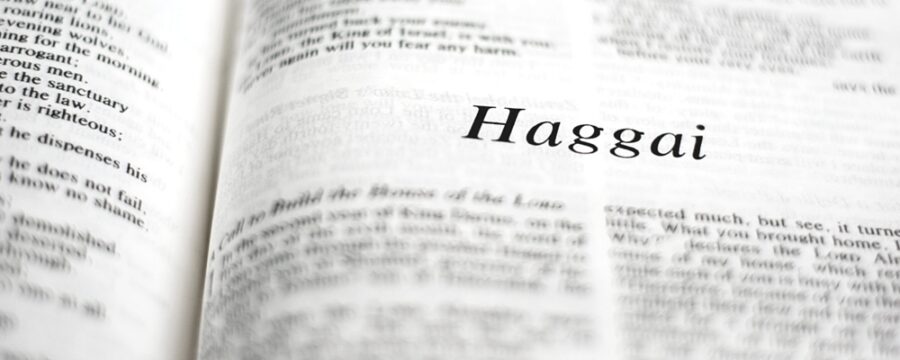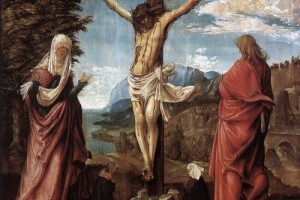In my previous blog posts on Haggai, I discussed a few of the different expectations that the people of Israel held concerning the presence of Yahweh as they followed his command to rebuild the Temple in Jerusalem. Their expectation for Yahweh to show up in a powerful way upon the Temple’s completion and dedication, an expectation based on his original glorious indwelling of Solomon’s Temple as told in scripture in 1 Kings 8, was unfulfilled. Despite the fact that they completed the Temple and honored Yahweh through a special ceremonial dedication (Ezra 6:15), he did not, as in previous instances in the people of Israel’s history, manifest his divine presence.
So, herein lies the tension between the people’s expectation and the prophetic ministry of Haggai. They had previously experienced Yahweh’s divine presence in a very tangible way, a way that had not only affirmed their obedience, but also resulted in the fulfillment of the promised blessings associated with his continued divine presence (economic, agricultural, and health). Israel’s expectation to benefit from the blessings closely associated with the presence of Yahweh once again dwelling in their midst, had to be balanced with the words given to the prophet by Yahweh himself. Yahweh’s promise of his continued presence amongst his people (Haggai 1:13 & 2:4-5) would be fulfilled. However, it becomes clear as we look at the prophet’s interaction with the people of Israel that the manner in which this promise would be fulfilled would be tangibly different from the past. In order to understand the reason for this difference it is important to, once again, take a step back into the history of the people of Israel and understand the circumstances surrounding the issue at hand. Yahweh, the God who had —gracefully dwelt among his people while manifesting his presence in a powerful way, chosen the people of Israel as his own, and purposed them to declare his name to the rest of humanity— removed his presence from his people.
During the time of the prophet Ezekiel, around 50 years before the time of Haggai (592 BC), the kingdom of Israel was divided and the Temple of Yahweh had become a place filled with idols and images meant to invoke the worship and favor of pagan gods. Instead of keeping their eyes solely focused on Yahweh and maintaining his sacred space, a space dedicated solely to his recognition and worship, the people had placed these idols of other gods within the Temple complex and engaged in the worship of other gods in the Temple courts. Ezekiel paints a picture of a people that have mixed their worship, incorporating the worship of their neighbor’s gods in hopes of establishing political alliances against the oncoming storm of war that was Assyria. In doing so, they unwittingly undermined their own cultural and theological identity.
Although they did not dare encroach on the Holy of Holies, the innermost part of the temple where the Ark of the Covenant was placed — an encroachment that would have meant instantaneous death — they covered the elaborate and worship invoking decoration of the Temple’s walls with images relating to these pagan gods. Make no mistake! This was not a secret attitude of the priestly. Rather, this was an intentional inclusion of the worship of pagan gods specially requested by the people themselves, a symptom of their lack of allegiance to Yahweh and a failure to trust in him as their protector and redeemer. This profane worship facilitated by Israel’s spiritual leadership revealed the hearts of the people who had forgone their own theological identity, diluting their uniqueness with the worship of lesser beings that promised instant gratification, temporary pleasure, and political assurances.
After many warnings concerning the people’s idolatrous hearts, Yahweh, the almighty God who provided the people of Israel with their very identity and purpose, had enough. Ezekiel describes how Yahweh, in a poignant reverse of the manifestation of his glory and presence during the original dedication of Temple (1 Kings 8), lovingly applied his righteous judgment against his rebellious people. However, this instance marked a pivotal moment in the history of the people of Israel, a moment that reverberates through history and impacts our reading of Haggai in a significant way.
Accompanied by the cherubim guarding the ark of the covenant, Yahweh’s glory, shrouded by a thick and impenetrable cloud, rose out of the Holy of Holies, shining so brightly in the Temple courts that the idols and pagan images within were eradicated from view. Then in what is likely the most poignant display of his indignation and wrath against the sinfulness of his people, Yahweh’s divine presence left the Temple. In doing so, he gave the people exactly what they desired, his own sacred space. Because he has left this space, the people are now free to use it to their idolatrous heart’s content. However, their reliance on the pagan god’s of their ancient Near East neighbors eventually results in the destruction of the building (circa 586 BC) that serves as the center-point for their theological and cultural identity. They are ripped from their homeland, enslaved, and exiled to the kingdom of Assyria. The sacred space that Yahweh had given to his people, a space in which they were privileged to participate in the recognition and worship of his divine presence now lies fallow, awaiting Yahweh to again act. And, as we will see (in future blog posts), his action, continues to reveal his divine grace and mercy towards his covenant people. Yahweh’s promises will be fulfilled and his presence will again be experienced by the people of Israel, although in a thoroughly unexpected and remarkably different way.
Featured Image from Album insert of an awesome band called Six Feet Deep





Leave a Reply
Your email is safe with us.